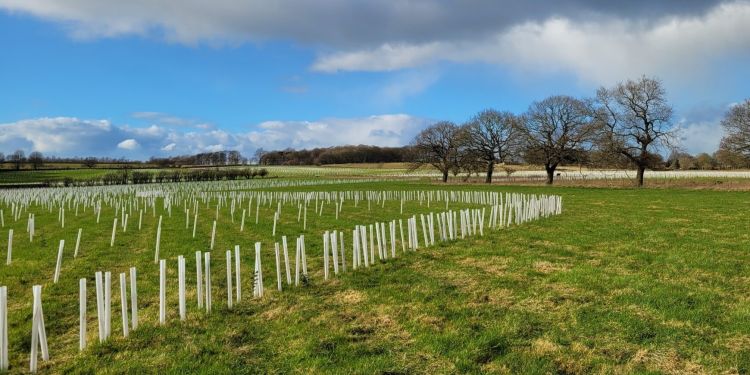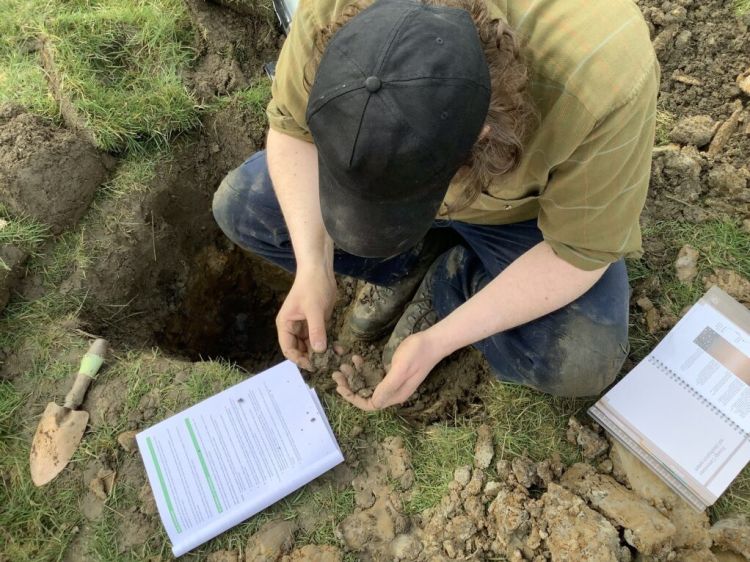Soil identification and monitoring is key to successful woodland creation

Read about how the researchers behind Gair Wood work with soil to ensure the success of their project.
Gair Wood is part of the White Rose Forest, the community forest for North and West Yorkshire.
It is made up of 66,000 trees, including 6,000 which were planted by volunteers from the local community, University of Leeds staff and students.
Gair Wood was developed by the University of Leeds, United Bank of Carbon and representatives from the White Rose Forest in collaboration with Leeds City Council, Defra and the Forestry Commission.
Soil affects which trees fare best
An initial ecological assessment and soil sampling took place at Gair Wood in 2022. The team considered which trees would be most suitable for the soil types that were there.
For example, the areas where the soil drained better were planted with a greater proportion of beech trees, while more alder trees were planted in areas with slower drainage, where they found more clay in the soil.
They also used climate modelling to determine the suitability of the climate for the trees over the next 50 to 100 years.
They installed a network of probes that continuously check the temperature of the soil which allows them to manage the site appropriately with challenges such as climate change.
Dr Robin Hayward explains the team’s work with soils at Gair Wood in this YouTube video.
Resilience to a changing climate
Dr Thomas Sloan, Forest Science and Policy Fellow at the Leeds Ecosystem, Atmosphere & Forest (LEAF) Centre, said: “If we want to plant a woodland that will grow well and will be as resilient as possible to a changing climate, we need to make sure that the trees we are planting are appropriate.
“That starts with understanding the ground we are planting in, as not all trees will be happy in all kinds of soil.
“Factors such as soil type, moisture and nutrients are very important. We’ve been really lucky to be able to lean on the resources and expertise of colleagues here at the University of Leeds.
“Using this knowledge, we’re confident we’ve planted a woodland that is appropriate for the landscape with trees that will be able to thrive over the coming years.”
Dr Cat Scott is a Natural Environment Research Council (NERC) Independent Research Fellow and University Academic Fellow in Biosphere-Climate Interactions. She is the director of the LEAF Centre.
She said: "As well as using information about the soil to design the site, we've put in place a long-term experiment where different mixtures of trees have been planted together.
“It's going to be fascinating to see how the woodland develops and whether we can detect differences in activity below the ground amongst these mixtures."
Gair Wood is a Living Laboratory, allowing researchers to explore the real-time impacts of tree planting as a nature-based solution to climate change.
Students across the University undertake local field trips and conduct research projects on the site. They have been an important part of site monitoring since the pre-planting ecological assessments in 2022.
Their ongoing research in the woodland will help them to understand the best ways to plant more trees across the UK in the future.





